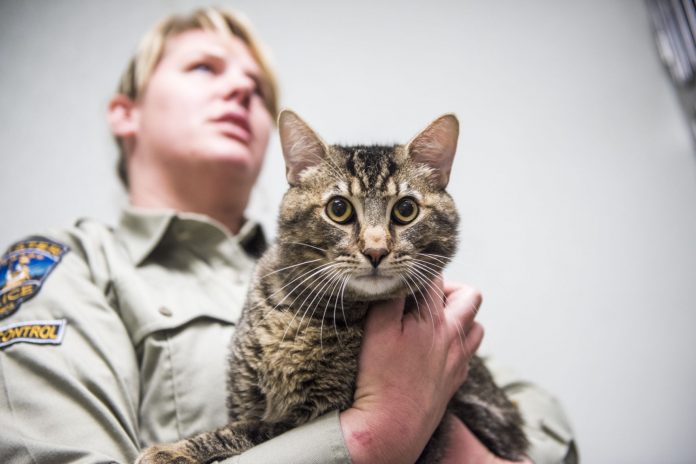
Hollister Resident Kayla Monighetti is lending a helping paw to feral cats in San Benito County.
Monighetti is running her own trap-neuter-return program, in which she captures feral cats if the property owner will pay to spay or neuter the feline, and will take it back.
There are several Hollister residents who have had TNR colonies in town, explained Julie Carreiro, the animal control supervisor for Hollister Police Animal Care and Services, in an email to the Free Lance in May. Most of the cats have died from old age and the feeders are not taking new cats, she wrote in the email.
“I am all for TNR as long as there are individuals willing to feed and maintain health care for the cats and spay or neuter any new incoming cats,” she wrote. “If not, who will care for the cats if they become sick or injured?”
Of animals that arrive at the Hollister Animal Shelter, 52 percent were euthanized in 2015, according to records requests made by this newspaper in March. The majority of the euthanized animals were feral cats, which due to their disposition toward humans can face more obstacles in finding homes.
TNR programs are controversial, with proponents arguing it is better than euthanasia and can provide a long-term stop to large feral cat populations. They also argue the cats can provide local rodent control. Opponents have questioned the effectiveness of the program for controlling feral cat colonies and contend leaving animals where there may not be steady sources of food, water and shelter is a form of cruelty. Others argue large populations of feral cats can be hosts for parasites and have impacts on local bird populations.
There is currently no local, government-funded program that allows county residents to spay felines at discounted costs. The cost of spaying a female cat is $65, while neutering a male cat is $45 at the Hollister-based Pet Friends’ Low Cost Spay and Neuter Clinic, Monighetti said.
In neighboring Santa Clara County, a spay and neuter program for feral cats allows residents of Gilroy, Morgan Hill, Mountain View, Sunnyvale and unincorporated areas to pay $10 for the surgery. Participating cities cover the rest of the costs. The program includes rabies and distemper vaccinations. As part of participating in the program, the cat receives a notch in its ear to allow others to identify it as a feline in the “Trap-Neuter-Release” program. Residents of Santa Clara County that live in non-participating cities, such as San Jose, pay a $25 co-payment for the same services.
Since posting about her trapping services on the Facebook page “What’s Going On In Hollister CA,” Monighetti has gotten requests for more than 30 cats that need help, she said when she spoke to the Free Lance in mid-April. She is not overwhelmed by the calls for help, yet, she said at that time.
“I think it is a good thing. Because just through the post I have people already offering to come out and trap with me,” she said, adding that others have come forward offering lactating cats as foster moms for young kittens. “I’m not going to be doing it on my own.”
Monighetti’s next step is to set up a GoFundMe.com account, she told the Free Lance in April. The website will let her crowd-fund money so that she can offer help when people reach out with a sick cat, want to bottle feed kittens but can’t afford materials, or can’t afford to get a cat fixed right now, she explained. Here is a link to her fundraising page: gofundme.com/bcyqv6x5.









